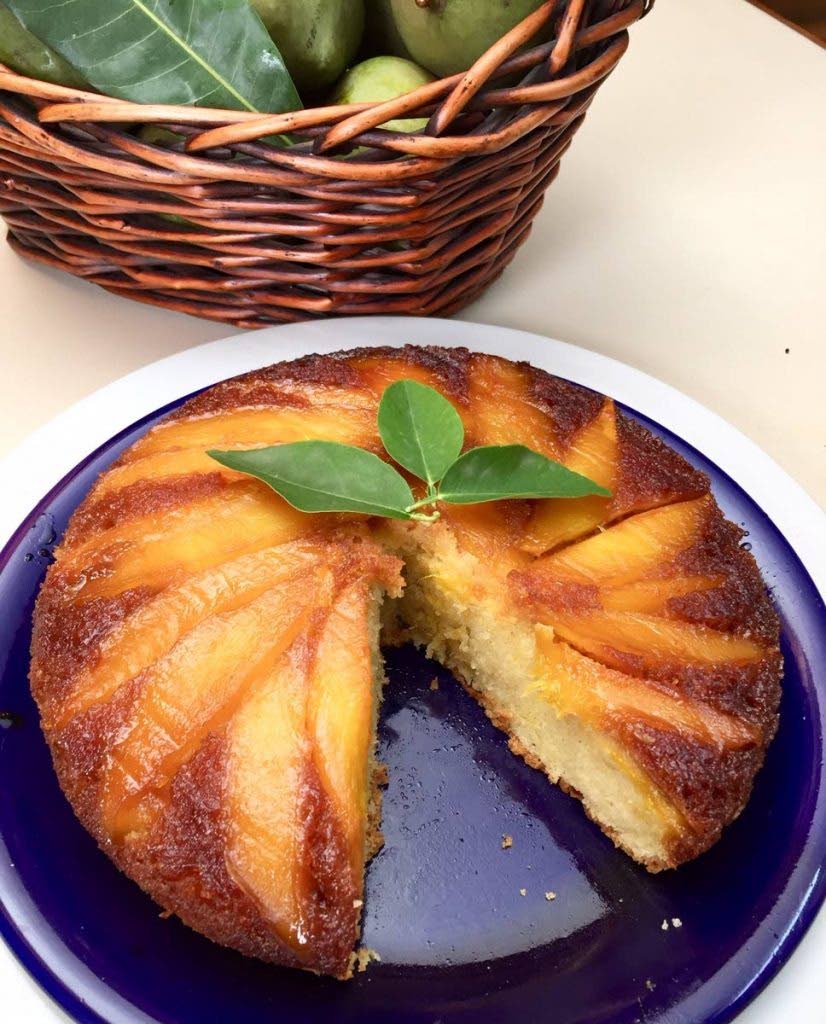|
Trinidadian architect-poet Fawzia Muradali Kane has been named as the second prize winner in Britain’s National Poetry Competition for her poem Eric.
The poem was selected from 19,000 poems from 8,841 poets in 110 countries, which were judged anonymously by the poets Jane Draycott, Will Harris and Clare Pollard. Born in San Fernando, Kane went to the UK on a scholarship to study architecture. She practised as an architect in Trinidad for some years, and now lives in London. Along with Mike Kane she is co-director of KMK Architects. Most of Kane’s early poetry is in the form of dramatic monologues, mainly in the voice “Tantie Diablesse”, a 300-year-old folklore character who was an enslaved woman from T&T. “Tantie Diablesse” (Waterloo Press, 2011) is also the name of her first collection, which was a finalist in the poetry section for the 2012 Bocas Lit Fest prize. Kane’s poetry has been published in journals including Agenda, Brittle Star, Poetry Review, Poetry London, Poetry Wales, and Rialto. A selection of her poems was published in MPT Profound Pyromania, which focuses on Caribbean poetry. An illustrated long sequence of poems Houses of the Dead was published as a pamphlet by Thamesis Publications in 2014. More: https://poetrysociety.org.uk/poems/eric/ (Source: Dominic Kalipersad, May 20, 2024)
0 Comments
Mango lime pie 3½ ozs ginger snaps 2 tbs melted butter ½ cup lime juice 1 cup condensed milk ½ cup mango puree 4 egg yolks 1 tsp lime zest Preheat oven to 325F. In a food processor process gingersnaps to fine crumbs, add melted butter and process. Press mixture into the bottom of a 9-inch pie plate. Bake for 5 minutes until set. Preheat oven to 350F. With an electric mixer, beat yolks until light and fluffy. Add condensed milk, lime zest and mix on low speed until combined. Add lime juice and mango puree, and mix well. Pour mixture into pre-baked cookie shell and bake for 20-30 minutes until the centre of the pie is firm and dry to the touch. Chill thoroughly until ready for use. Option: serve with whipped cream if desired. Serves 6-8 Mango passion fruit sorbet with lemongrass 5 cups water 3 cup sugar 1 stalk fresh lemon grass bruised and cut into 2-inch pieces 2 cups mango pulp (about 8 Julie mangoes) 1 cup passion fruit pulp( about 6 passion fruit) ¼ cup fresh lime juice Boil water and sugar with lemongrass until sugar is dissolved. Cool and strain. Stir in lime juice, mango and passion fruit pulp. Chill well. Pour into an ice cream freezer and process according to manufacturer’s directions. Makes about 6 cups To make passion-fruit pulp, slice fruit into half, scoop out pulp covered seeds, put in a blender jar and process until liquefied. Add a very small amount of water if needed, do not strain. Serves 8-10 It's mango season and as more and more mangoes appear at the grocery stores, here are two recipes. Unfortunately Julie mangoes are hard to come by, so use the yellow Atulfo mangoes. These recipes were published by Newsday on June 1, 2024. Enjoy. Caramelised mango upside-down cake - Cake: ⅓ cup butter ½ cup granulated sugar 2 large eggs 1½ cups all-purpose flour, sifted 2½ tsp baking powder 1 tsp cardamom ½ cup orange juice 1tsp vanilla For the mangoes 1 lb mango flesh, preferably Julie, just ripe, sliced ½ cup granulated sugar ⅛ cup water Juice of two small limes Preheat oven to 350F. Grease one 9-inch round spring-form cake pan, and line the bottom with parchment paper. Place mangoes in a concentric circle at the base of the pan. Squeeze lime over mangoes. Cream ⅓ cup butter with granulated sugar until light and fluffy, and add eggs one at a time, beating well between additions. Sift flour with baking powder and cardamom. Add to butter mixture alternately with juice and vanilla, making sure your last addition is with flour. Place sugar in a small saucepan, add water and cook until sugar becomes an amber colour. Pour over mangoes. Spoon on cake batter and bake for 35 minutes. Remove, and invert onto serving plate, Serve warm. Serves 8 Mango mousse 1 tbs gelatine ¼ cup rum 2 cups whipping cream ½ tsp lime zest 1 cup mango pulp Heat rum gently remove from heat and dissolve gelatine into rum, set aside and cool. Puree mango in a food pro and add to gelatine mixture with lime zest. Stir well and refrigerate to cool. Beat whipping cream to stiff peaks and gently fold into mango puree. Pipe into stemmed glasses, cover and refrigerate until ready for serving. Garnish with sprigs of fresh mint and chopped fresh mango.  that Trinidad & Tobago is the third largest Leatherback turtle nesting site in the world? Approximately 10,000 turtles visit our shores every year to lay their eggs! Our country is home to many species of endangered and critically endangered turtles, such as the Hawksbill sea turtle, the Green sea turtle, and the Leatherback sea turtle. After about two months in their nest, Leatherback hatchlings emerge from the sands and make their way to the ocean. Matura, Las Cuevas, Fishing Pond, and Grande Rivière are some of our most popular beaches where people can gather to observe this amazing phenomenon. During nesting season, these beaches are protected and permission is required from qualified tour guides to view the turtles. This season lasts for six months, until August 31st. This beautiful photo by Trinbagonian photographer Maria Nunes shows a leatherback turtle on the Grande Riviere Beach, at the North Coast of Trinidad. It is courtesy of the magazine, “Ins & Outs of Trinidad & Tobago 2016”, which is part of the National Archives of Trinidad & Tobago Magazine Collection. At the National Archives, we believe that magazines are valuable archival documents that show how dates of agricultural, civil, religious, or social significance can change over time. (Source: National Archives of T&T, May 23, 2024)  THE EAST INDIAN BELLE. Credit to author Angelo Bissessarsingh On 30th May , 2024 , the nation celebrates the 179th anniversary of Indian Arrival. While it is a time for much grandiose exhibition and soliloquy, it would be well to look back on the largely neglected role of the Indian woman in the trials of arrival. During the era of immigration (1845-1917) women were far fewer than men. Thus the Indian woman became a possession to be aggressively defended which sadly enough, resulted in frequent episodes of wife-murder wherein husbands who suspected their wives of infidelity punished the hapless spouses with swipe of a sharpened cutlass. The frail beauty of the Indian woman gripped the fascination of men (including photographers who considered them to be of rare exotic appeal) in general exposing them to unwanted attentions especially from white planters and overseers. Not a few became mistresses of the planters, often against their wills. One such enchanted master of the 1890s wrote: "Strolling along the shady side of a wide and busy street, I overtook a young girl. I should have passed her had I not slackened my gait when I came within a few steps of her, and, walking softly, measuring my paces with hers, followed behind the unknown wayfarer respectfully and at a proper distance to study and admire her costume, which was so neatly fitted to her slight and charming figure, so tastefully disposed, draped in such dainty folds and graceful gatherings, that the wearer of it made a most attractive picture. Her little feet were bare; nevertheless, she trod firmly, stepping lightly, with graceful poise. In time, I made a mental catalogue of her appearance from which an ingenious artist could paint a full-length picture of her. I noticed that her teeth were regular and white, mouth small and regular, lips full and pouting; head gracefully poised, face oval, Grecian in type; nose delicate, straight, finely chiseled; ears small, well shaped, and well put on ; hair glossy, raven-black, straight and long, braided carefully with dexterous fingers, and tied at the ends with orange ribbons ; hands small and covered with rings” The delicate Indian belle was sacrificed in Trinidad to a lifetime of toil in the cane - fields where burdens were heavy only to be followed by domestic tasks. Many were child-brides, wed in an ancient tradition to men who were often old enough to be their fathers. Those who married men of wealth dispensed with the simple, chaste garb of white cotton which they had worn for generations for heavy silver bangles and gold coin haikal- these being the public status symbol. Educational opportunities were few until the coming of the Presbyterian Church’s Canadian Mission to the Indians. There was no voice which spoke for the Indo-Trinidadian woman. Nevertheless, the indomitable spirit of womanhood persevered and these were the mothers who raised generations of children who suckled on the milk of self-denial to rise beyond the cane -fields and form a people which is now both economically secure and socially uplifted. East Indian Woman, painting by Rudolph Bissessarsingh (Source: Virtual Museum of T&T, May 27, 2024) |
T&T news blogThe intent of this blog is to bring some news from home and other fun items. If you enjoy what you read, please leave us a comment.. Archives
July 2025
Categories
All
|



 RSS Feed
RSS Feed